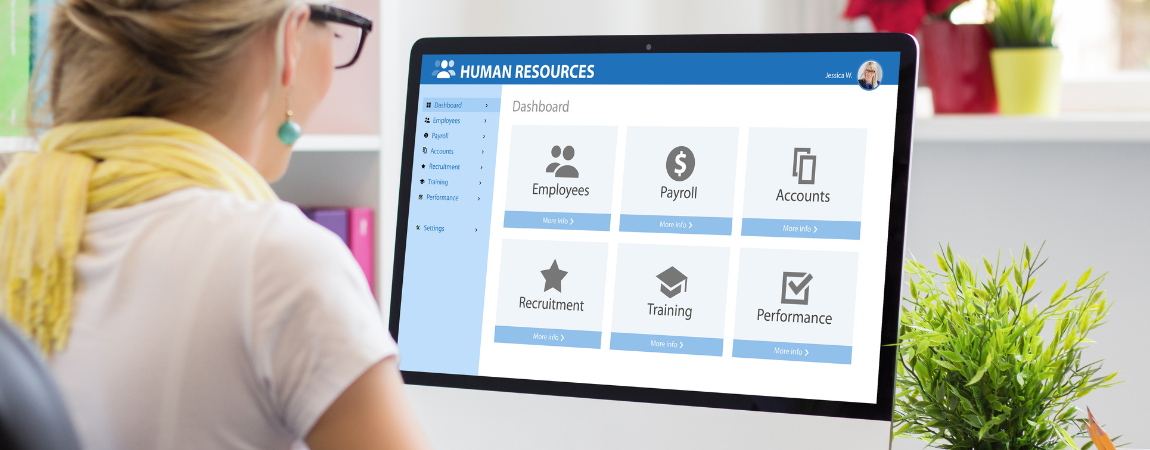
What is Human Resource Management
May 16, 2022
Project Management Tools – Comprehensive Guide
December 14, 2022
How to select the best HRMS Software?
The new-age companies understand that having quality human capital working for them is a massive competitive advantage. The companies, therefore, consider human resource management as an important organizational function.
Human Resource Management, in simple terms, consists of the measures and policies a company adopts to provide a healthy and conducive working environment to its employees. If you want to know more, you can read our blog which will introduce you to various HRM functions and concepts.
In today’s technology-driven era there are numerous HRMS software available that will assist the HR department in the smooth functioning of their day-to-day tasks. You must select the one that best fits your organizational needs. Having said that, there are some features that an HR software must have. In this blog, we outline following key features that you can evaluate while selecting the best HR software for your organization.
- Recruiting
- Attendance and a Payroll
- Employee Self Service
- Reporting
- E-Forms
- Compliance
1. Recruiting
The HR department spends a considerable amount of time and resources on recruitment.
The candidates can apply for a job in your company through numerous avenues. They can do it through job portals, social media, directly through your website, emails, etc. The best HR software will be able to collate all these into a single database. The HR team can then use filters to screen profiles matching the job requirements and shortlist candidates for further process.
A few advanced HR software solutions also provide features allowing the applicants to create their profiles on the company portal, get automated emails about the next steps, and also track the current status of their job application. Previously, these tasks had to be done manually. However, the HRM solution should be able to automate a lot of these tasks with great proficiency.
2. Attendance and Payroll
A good HRM solution should also be able to track employee attendance. The leave application process can also be a part of this module itself. HR personnel or team managers can use it to schedule shifts, if applicable. This attendance module coupled with the payroll processing module can help the HR department during salary disbursement.
Each employee’s salary, tax deductions, incentives, etc. are a part of the payroll module. There are various standalone payroll processing systems available in the market. However, if the HRM solution has an integrated solution, it is beneficial. All the employee data always stays updated. Also, there is no need to replicate the data or transfer it to different solutions.
3. Employee Self Service
Employee Self Service or ESS module stores all the personal details of an employee like their address, contact details, email id, timesheets, payroll-related information, etc.
These modules should have role-based access. The manager should have access to the details of his/her team members. The HR personnel should be able to view the data for the entire organization. Also, depending upon the roles, the system should allow each user to view and change only certain aspects of the information. For other information, there should be policies and approval mechanisms in place.
We can consider a use case wherein an employee can change personal contact details. However, for any changes to the attendance or payroll-related information, a notification may be sent to the manager or the HR department for approval.
4. Reporting
A reporting module will allow the HR department to create essential reports and share them with the concerned stakeholders. The reports could include employee performance, recent recruits, details of personnel who exited the company, vacancies in the company, HR budgetary allocations and requirements, etc.
The reporting module should be user-friendly, easy to use, and should provide flexibility to the HR personnel to create and share reports quickly. It should provide the top management insights into their workforce and allow them to slice and dice data using various parameters with negligible to no technical assistance.
5. E-Forms
E-forms can be used extensively by the HR department as a part of numerous processes to collect relevant data. They can use it to collect data during the interview process, performance appraisals, employee feedback on HR policies, record exit interview responses of employees, etc.
The HR team should be able to quickly create forms and share them with the concerned personnel as and when required. Also, the e-forms should be compatible with different file formats like MS Word, Excel, etc. which will make them easy to distribute.
6. Compliance
The HR department has to keep track of various statutory compliances especially related to payroll, tax deductions, labour laws, minimum wages, employee benefits, etc. If the company has a multi-country presence the compliances may vary as per the local rules and regulations. In such a scenario it should have a system that can easily adapt to these variances depending on the employee’s location.
If the companies do not follow these compliances, they may have to pay hefty penalties and fines as governed by the rules and regulations. In many cases, government agencies or local authorities may take legal routes against them for non-compliance. Hence, there must be no slip-ups when it comes to compliances. The HRM system should be equipped to handle these variances and statutory requirements.
The above-mentioned modules are key to the effective implementation of HRM policies within an organization.
